Top 10 Apple Notes Alternatives You Should Try in 2025
- Aisha Washington

- Aug 4
- 22 min read
Updated: Sep 30

Are you searching for the best note-taking apps in 2025? There are many Apple Notes alternatives you can try. Here are the top 10: remio, Microsoft OneNote, Notion, Obsidian, Bear, Joplin, UpNote, Evernote, Google Keep, and Simplenote. Each note-taking app has special features. Some apps care a lot about privacy. Others have strong AI tools. You can use these apps on many devices. This makes it easy to use your favorite note-taking app anywhere. If you want an iPad note-taking app or an app for daily tasks, you will find good choices here. The best alternatives give you value and flexibility. Try these note-taking apps to see which one is best for you.
Key Takeaways
Many note-taking apps have special features. Some have AI tools, privacy settings, and work on many devices. These features help different people with different needs.
Pick an app that fits how you use it every day. You might want quick notes, teamwork, privacy, or offline use. This helps you have the best experience.
remio, Notion, and Evernote have strong AI and sync on many devices. Obsidian and Joplin care more about privacy and offline use.
Prices are very different. Some apps are free with basic things. Others cost money for better tools or cloud syncing.
Try out different apps to see which one you like best. This helps you find what works for your style, device, and how you take notes.
Selection Criteria
Key Factors
When you pick the best note-taking apps, you want tools that fit your life. The best note taking apps have strong AI features. These features help you organize and find notes fast. Many people need cross-platform support. You can start a note on your phone. Then you finish it on your laptop. The best note-taking app should work offline. This lets you use it anywhere, even without internet. Privacy is very important. The best note taking app keeps your data safe. You control your own information.
Here are the main things to think about when picking the best note-taking app:
AI Features: The best note-taking apps use AI to help you search, organize, and write notes. AI saves time and helps you get more done.
Cross-Platform Support: You want a note taking app that works on all your devices. It should work well on your phone, tablet, and computer.
Offline Functionality: The best note-taking app lets you use and edit notes offline. This is great for students and workers who travel or have no Wi-Fi.
Privacy: The best note-taking apps keep your notes safe. Look for apps with strong privacy settings and safe cloud sync.
User Experience: A good note-taking app is easy to use. You should find your notes quickly and enjoy using the app.
Pricing: The best note taking apps give you good value. Some are free. Others have paid plans with extra features.
Tip: Always check if your note-taking app works offline and has cloud sync. This helps you never lose your work.
User Needs
Your needs help you choose the best note-taking app. Students need the best note-taking app for class, study, and linking ideas. Many students use digital note taking apps on laptops or tablets. Academic users want templates, PDF tools, and offline access. They also care about privacy and linking notes for research.
Professionals want the best note-taking app for meetings, projects, and writing notes. Many use note-taking apps with AI to save time. Offline use helps them work while traveling. Privacy and working with other tools are important for work.
Entrepreneurs need the best note-taking app for ideas, planning, and privacy. They want a note-taking app that keeps ideas safe and helps plan projects. Working with other apps and offline use are important too.
User Type | Main Needs | Best Note-Taking Apps & Features |
Students | Study notes, linking, offline, privacy | Notion AI, Roam Research, offline functionality, privacy controls |
Professionals | Meetings, projects, offline, integration | Evernote AI, Otter.ai, seamless integration, offline functionality |
Entrepreneurs | Ideas, privacy, planning, offline | Obsidian, Roam Research, privacy, offline functionality |
Surveys show that 71% of users want the best note-taking app that is easy to use and fits their work. Students and professionals both use digital note taking apps for work and school. Entrepreneurs care most about privacy and managing ideas. The best note-taking apps fit your needs, work offline, and keep your notes safe.
1.remio
Overview
remio stands out as a leading note taking app for personal knowledge management. You can use remio to capture ideas, organize your thoughts, and manage your daily tasks. This note-taking app uses advanced AI to help you work smarter. The AI Copilot lets you ask questions and get instant answers while you write. You can use the AI search tool to find any note or idea in seconds. remio also lets you save web content directly into your notes. This makes it easy to collect resources from your favorite sites.
remio’s personalized assistant learns from your daily actions. It helps you write reports, reply to emails, and manage your schedule. You can use remio on different devices, so your notes stay with you everywhere. The note-taking experience feels smooth and fast. You can search for information using natural language, making the search tool very powerful.
Pros & Cons
Pros:
Automatic web scraping during browsing without the need for manual confirmation.
Powerful AI capabilities, including knowledge base-based AI ask functionality.
AI search feature for quickly locating any previously browsed or edited information.
Support for local files such as PDFs, slides, and Word documents without manual uploads.
All information is stored locally, with support for deploying private model keys.
Cons:
Currently lacks support for team collaboration.
Limited integration with third-party software.
Here is how users rate Remio compared to other note-taking apps:
You can see that remio has perfect scores in every review category. Users love the design, features, and support. The note-taking app gets high marks for its AI search tool and easy-to-use interface.
Pricing
remio offers flexible pricing for every user. You can start with a free plan to try the main note-taking features. Paid plans unlock more advanced AI tools, extra storage, and premium support. You can choose a plan that fits your needs and budget. remio gives you great value for a note taking app with strong AI and search tool features.
2.Microsoft OneNote
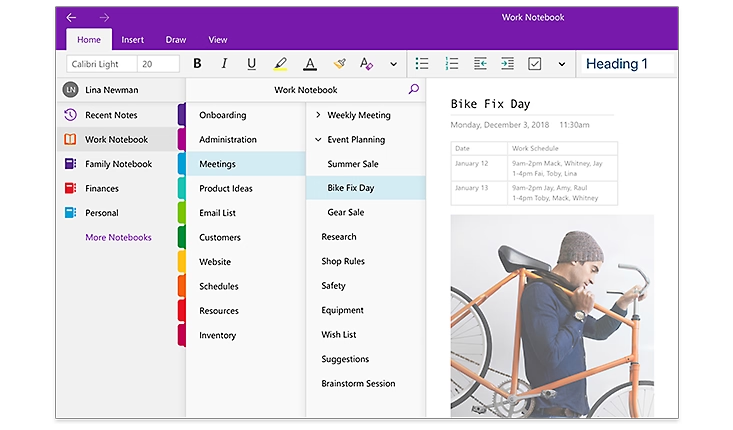
Overview
If you want a note taking app for every device, try Microsoft OneNote. It is the best note-taking app for using on many platforms. You can use it on Windows, Mac, iOS, iPadOS, and Android. There is also a web version, so you can open notes in any browser. You can edit notes offline and they will sync when you go online. You can work with others at the same time. Many people can write on one page, like a shared whiteboard. You can save webpages as images in your notebook. You can keep notes organized with sections and tags. If you use Microsoft Teams or Office 365, you can put notebooks in your team channels.
Feature | Description |
Cross-platform availability | Free on Windows, MacOS, iOS, iPadOS, Android |
Web-based access | Access notes through any browser |
Offline editing and sync | Edit notes offline, sync later |
Real-time multi-user collaboration | Work together on the same page |
Webpage rendering | Save webpages as images |
Pros & Cons
OneNote has many tools to help you make better notes. You can draw, type, or add pictures to your notes. The best note-taking app should help you stay organized, and OneNote does this well. You can share notes with friends or classmates by sending links. Real-time teamwork makes group projects simple. You can use OneNote for school, work, or personal things.
Pros:
Works on almost every device
Free to use with basic features
Strong organization tools
Real-time collaboration
Easy sharing and syncing
Cons:
Some features need a Microsoft account
The interface can feel busy for new users
Pricing
Microsoft OneNote is a free note taking app. The free version gives you most tools you need. If you want more storage or extra features, you can get a Microsoft 365 subscription. This gives you more cloud storage and more tools for the best note-taking app experience. Many people say the free version is enough for daily use. You can try OneNote and see if it is the best note-taking app for you. Many people pick it as their main note-taking app after reading a review or trying it.
3.Notion
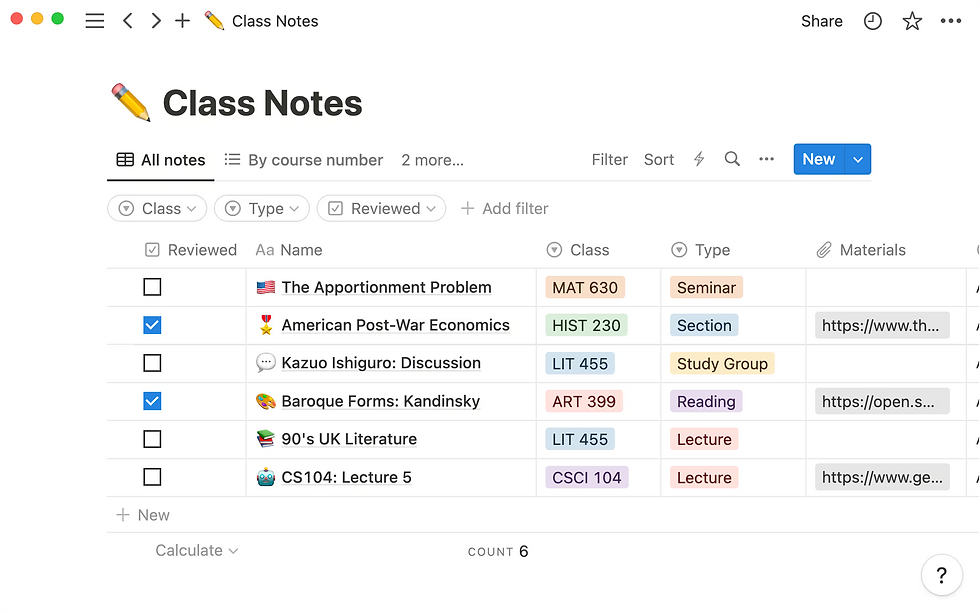
Overview
You can use Notion as a powerful note taking app for almost any purpose. Notion lets you organize your notes, tasks, and projects in one place. You can create pages for school, work, or personal life. Notion supports many types of content, such as text, images, tables, and calendars. You can use Notion to manage documents, spreadsheets, and even your calendar in a single workspace. Notion’s AI features help you summarize documents, highlight key points, and suggest ideas as you write.
Many people use Notion for different reasons. Here are some of the most popular ways you can use this note-taking app:
Manage content and organize projects like product launches.
Work with your team in real time using AI tools for meeting notes and task assignments.
Track your goals, habits, and to-do lists with smart AI suggestions.
Connect Notion with Google Drive or Slack to build custom dashboards.
Summarize documents and keep important information easy to find.
You can also find creative uses for Notion. Some people track their water intake, plan weddings, or organize recipes. The template gallery helps you start quickly with ready-made pages like habit trackers and vision boards.
Pros & Cons
Notion gives you a flexible note taking app that fits many needs. You can plan your whole life with it. Many users share templates and tips, making it easy to learn new ways to use the note-taking app.
Pros:
Combines notes, tasks, and databases in one note-taking app
Strong AI features for summaries and suggestions
Real-time team collaboration
Works on web, Windows, Mac, iOS, and Android
Broad integration with third-party tools like Slack and Google Drive
Cons:
Can feel complex for new users
Some features need internet access
You will see many positive review posts about Notion. People like the flexibility and the large community that shares ideas.
Pricing
Notion offers a free plan for personal use. You can use most note taking app features without paying. The free plan gives you unlimited pages and blocks. If you want more advanced features, such as team collaboration or extra storage, you can choose a paid plan. Notion’s paid plans start at a low monthly price. Students and teachers can get extra features for free. Many users say Notion gives great value as a note-taking app. You can read a review or try the free plan to see if it fits your needs.
4.Obsidian
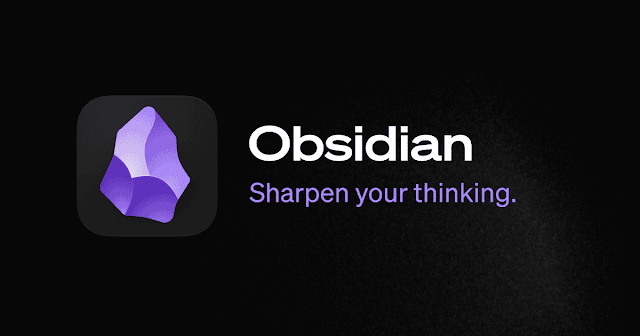
Overview
Obsidian helps you manage notes and ideas in a strong way. Many power users like Obsidian because you control your data. You save notes as Markdown files on your device. This means you always have offline access. You do not need to use cloud services. Obsidian works well even without internet, so you can work anywhere.
You can change Obsidian with plugins. The plugin system lets you add things like calendars and task tools. Some plugins use AI to help you. For example, plugins can suggest tags or summarize notes. Many people use plugins to organize information and make a personal knowledge graph.
Obsidian’s graph view shows how your notes connect. You see a map of your ideas and links between topics. This helps you understand hard subjects. The app also works offline, so you can edit and search notes without internet. Many professionals use Obsidian for research, writing, and projects because it is flexible.
Here is a table that shows why power users like Obsidian:
Feature | Description | Benefit to You |
Notes saved as Markdown files on your device | Full data ownership and privacy | |
Offline Accessibility | Use all features without internet | Reliable note-taking anywhere |
Plugin Customization | Add community plugins and themes | Personalize your workflow |
Graph View | Visual map of note relationships | Understand and navigate ideas easily |
Markdown-Based | Simple formatting for notes | Easy to use and compatible |
Offline Functionality | Edit and search notes offline | Always have access to your knowledge |
Pros & Cons
Obsidian gives you strong offline use and privacy. You can work without internet and keep notes safe on your device.
Pros:
Full offline support for note-taking and searching
Local storage for privacy and control
Highly customizable with plugins
Graph view for visualizing connections
Flexible for many workflows
Cons:
Some setup needed for cloud sync
Learning curve for plugins and Markdown
Pricing
You can use Obsidian for free with all main features, including offline use. If you want to sync notes on all devices or use Obsidian for business, you can buy paid plans. The paid sync keeps your notes updated everywhere, but you still have offline access. Many people find the free version is enough, especially if they care about offline work and privacy.
5.Bear
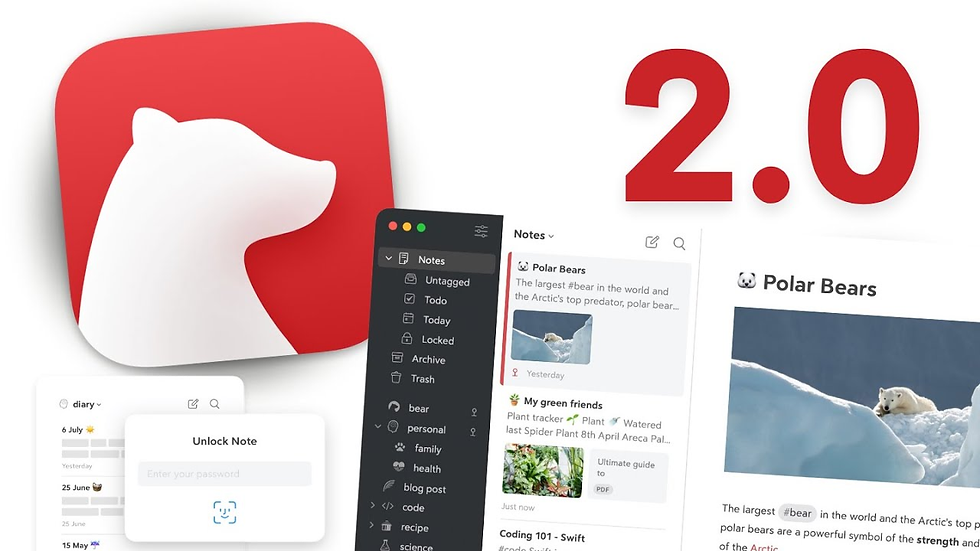
Overview
Bear is a top note taking app for Mac users who like things simple and pretty. The app has a clean look that helps you focus on your notes. You can use Markdown to style your text fast with special symbols. Bear lets you organize notes with hashtags and tags inside other tags. This makes finding notes easy. If you use an iPad and Apple Pencil, you can draw and write by hand in Bear. You can pick from 28 themes and 15 icons to change how Bear looks. If you want to move your notes, Bear lets you export them in many ways like HTML, PDF, and Markdown. This makes it easy to use your notes in other apps.
Pros & Cons
Bear lets you change how the app looks and feels. You can pick themes, icons, and change your notes’ style. Many people say Bear feels more personal than other Mac note apps. Bear won an Apple Design Award for its style and how easy it is to use. You can use Bear with other apps and move notes in and out easily. Bear works with Apple Pencil, so you can draw and write by hand. This is good for creative work.
Pros:
Allows customization of the app's appearance, including themes, icons, and note styles.
Is perceived as more personal compared to other Mac note-taking apps.
Won an Apple Design Award, recognizing its style and ease of use.
Supports integration with other apps, enabling easy transfer of notes in and out.
Works with Apple Pencil, facilitating hand-drawn and handwritten content—ideal for creative tasks.
Cons:
Only supports macOS, limiting accessibility for users on other operating systems.
Lacks advanced features compared to some competing note-taking apps.
Does not integrate AI capabilities, missing out on AI-driven enhancements like smart suggestions or automated organization.
Absent of collaboration features, making it unsuitable for team-based note-sharing or joint editing.
Here is a table that compares Bear and Apple Notes:
Aspect | Bear Notes | Apple Notes |
Design & Customization | 28 themes, 15 icons, typography options; Apple Design Award | Clean design, no customization |
Formatting | Markdown formatting | Rich text formatting |
Apple Integration | Partial; supports Apple Pencil | Deep integration, instant Lock Screen access |
Third-Party Integration | Strong; many export/import options | Limited export options |
Collaboration | Limited | Built-in collaboration |
Bear lets you make your notes look special. But it does not have as many sharing tools as Apple Notes.
Pricing
Bear uses a subscription plan. You can try Bear for free, but some things cost money. The paid plan is about $3 each month. You get all themes, export tools, and syncing on all your devices. Many people think the price is good for a stylish and flexible Mac note app.
6.Joplin
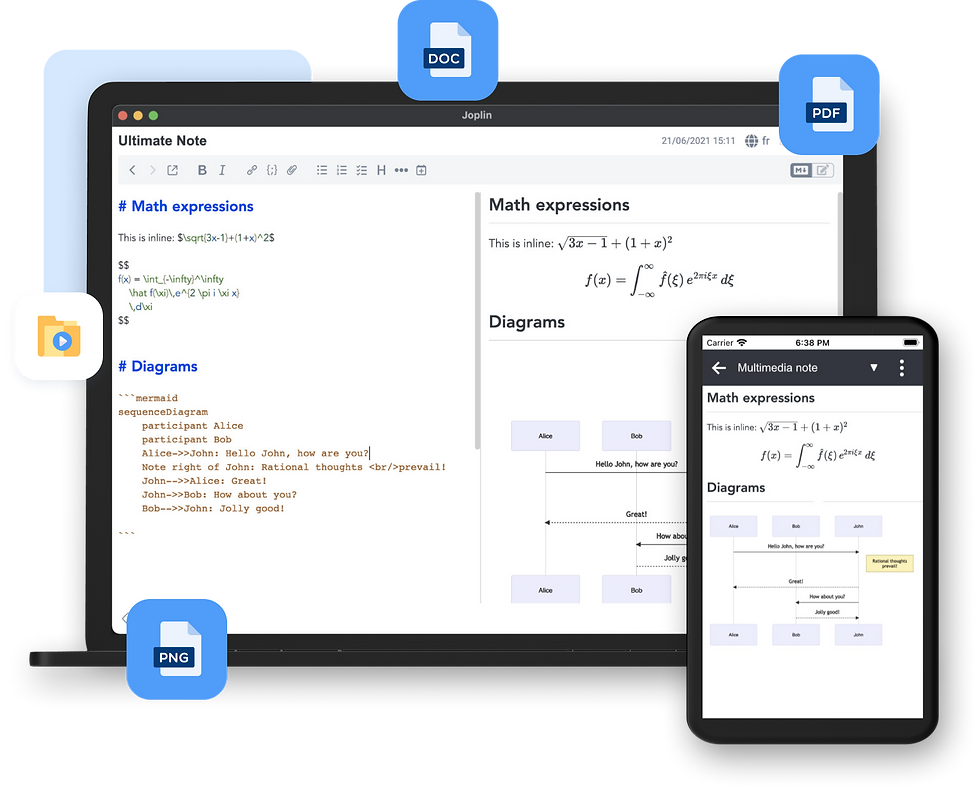
Overview
Joplin is a free note-taking app that cares about privacy. You can write notes, make to-do lists, and sort ideas in notebooks. It works on Windows, macOS, Linux, Android, and iOS. You can use Joplin offline, so you do not need internet. You can sync your notes with Dropbox, OneDrive, or Joplin Cloud.
Joplin gives you strong control over your data. You can turn on end-to-end encryption to keep your notes safe. Only you can read your notes if you use this feature. Joplin does not have ads and is light on your device. This helps keep your information private. You can add plugins for more features like markdown or web clippers.
Anyone can look at Joplin’s open-source code. This makes people trust the app and know it is safe for privacy.
Pros & Cons
Pros:
Open-source and ad-free, ensuring good privacy protection.
Supports end-to-end encryption for all notes, enhancing security.
Allows syncing notes with multiple cloud services, offering flexibility in data storage.
Features strong encryption capabilities (though manual setup is required).
Enables customization via plugins, letting users tailor the app to their needs.
Cons:
Encryption is not enabled by default; users must set it up manually to achieve full privacy.
Compared to apps like Standard Notes (which have encryption on by default), Joplin offers more options but less automatic safety, requiring users to take active steps to secure their data.
Feature | Joplin | Standard Notes |
Open-source | Yes | Yes |
End-to-end encryption | Optional (user-enabled) | Default (always on) |
Sync options | Multiple (Dropbox, OneDrive, etc.) | Limited |
Privacy focus | High, but user-dependent | Very high, automatic |
Pricing
Joplin is free and has all the main features. If you want to use Joplin Cloud or get extra help, you can pay for a plan. The free version already gives you privacy and offline use. Paid plans give you more storage and better support, but you do not have to pay to keep your notes safe.
7.UpNote
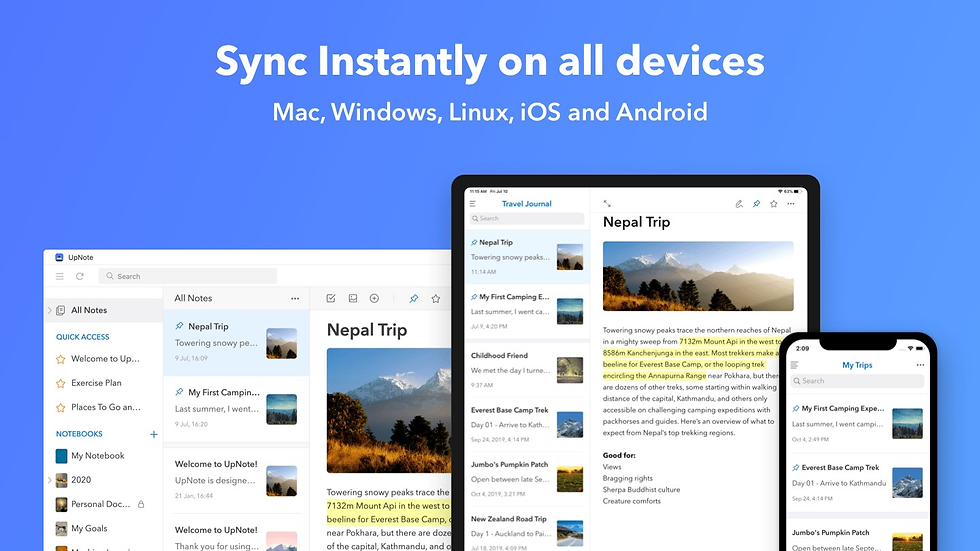
Overview
UpNote is a simple app for taking notes. You can write with rich text or Markdown. You can add lists, images, links, and code blocks. The app lets you sort notes into notebooks and sections that fold up. Focus mode helps you block out noise and write better. UpNote has web clippers for Chrome, Safari, and Firefox. You can save things from the web fast. You can lock notes with a passcode for more privacy.
Your notes sync by themselves on all your devices. UpNote works on Mac, Windows, iOS, and Android. You can use it offline, so your notes are always there. You can back up your notes and see old versions. You can share notes with secret web links. You can also export notes as text, PDF, HTML, or Markdown. UpNote has nice themes, like dark mode. The sticky window keeps important notes on top.
Many people say UpNote is easy to use. It helps them stay organized. You can use it for small or big note-taking jobs.
Pros & Cons
Pros:
Enables note locking, backups, and diverse sharing/exporting.
Offers a clean, distraction-free writing experience with offline sync.
Cons:
Lacks advanced teamwork and collaboration tools.
Has limited integration with third-party productivity apps.
May not support specialized file formats, disappointing some users.
Aspect | Positive Feedback Percentage | |
Features and Functionality | 26 positive vs. 1 negative | 100% positive |
Syncing and Cross-platform | 26 positive vs. 1 negative | 100% positive |
User Interface | 26 positive vs. 1 negative | 100% positive |
Value for Money | 26 positive vs. 1 negative | 100% positive |
Organization and Notebooks | 26 positive vs. 1 negative | 100% positive |
UpNote has many good points:
Writing is clean and has no distractions.
Sync is fast and works offline.
You can organize notes with notebooks and folding sections.
You can lock notes and back them up.
You can share and export notes in many ways.
Some people want better teamwork tools. Most users like UpNote because it is simple and has many features.
Pricing
UpNote has a free plan for up to 50 notes. If you need more, you can pay $1.99 each month. You can also buy a lifetime license for about $40. UpNote is one of the cheapest note apps with lots of features.
Note-Taking App | Pricing Model | Key Features / Notes |
UpNote | Free plan limited to 50 notes; Premium at $1.99/month or lifetime license ~$40 | Clean, distraction-free writing; rich formatting; notebook hierarchy; offline sync |
Obsidian | Free; $5/month for sync; $10/month for publishing | Free core app; paid sync and publishing; networked thinking focus |
Standard Notes | Free; $90/year for premium | Encrypted notes; advanced editing and themes in paid plan |
Amplenote | Completely free | Task-focused note-taking with prioritization |
UpNote gives you a lot for your money. It has strong features and a low price. This makes it a smart pick for students and workers.
8.Evernote
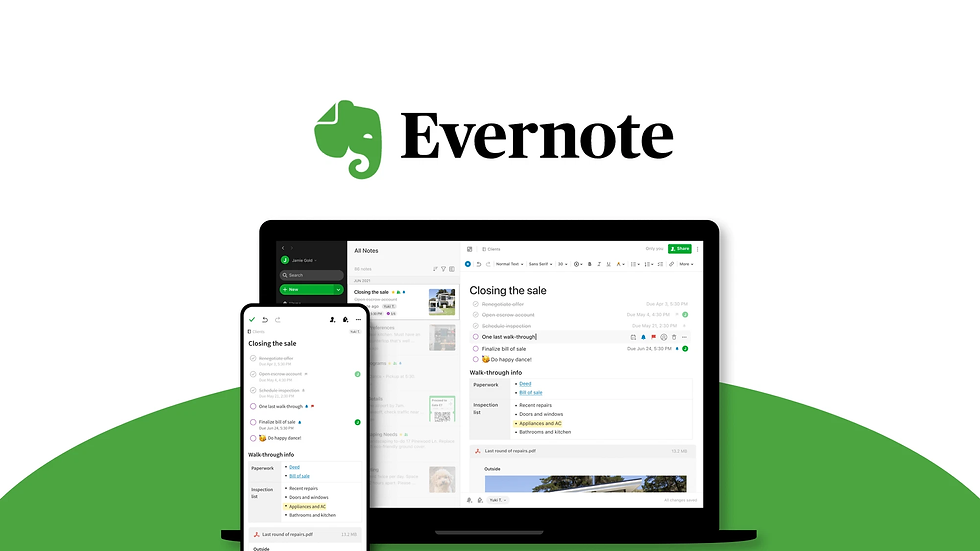
Overview
You can use evernote to keep your notes, tasks, and ideas together. The app lets you make notebooks and add tags. You can clip web pages and attach files. You can also scan papers and set reminders. Evernote works on Windows, Mac, iOS, Android, and the web. You can sync your notes on all your devices. The app now opens faster and syncs notes right away. Evernote works better with touch screens, especially on Windows 10. The company made the app easier and more stable.
Recent updates changed evernote in many ways:
Now, notes sync right away on all your devices.
Touchscreen laptops and tablets work better with the app.
Evernote added about 60 changes from what users wanted.
The company started adding AI features, but you can turn them off.
The design is simpler and looks like other popular apps.
Evernote listens to users and tries to help both single users and teams. The app keeps your info private and lets you pick new features.
Pros & Cons
Evernote gives you many tools to manage your notes. You can use it for school, work, or home projects. The app helps you stay neat and find notes fast. You can work alone or share notes with others. You can change your workspace and use templates for different jobs.
Pros:
Works on lots of devices and platforms
Syncs fast and runs better now
Has strong search and ways to organize notes
Supports touchscreens on tablets and laptops
AI features are there if you want them
Cons:
Some people think the price is high
Free plan has fewer features and device sync
Pricing
Evernote has different plans. The free plan only lets you sync notes on a few devices. The Personal plan costs $129.99 each year. It gives you more space and lets you use as many devices as you want. The Professional plan is $169.99 each year. It gives you more upload space and AI features. The Teams plan is $249.99 for each user every year. It is for groups who work together. Many people say evernote costs more than other note-taking apps. The company raised prices to add new features and make the app better.
9.Google Keep
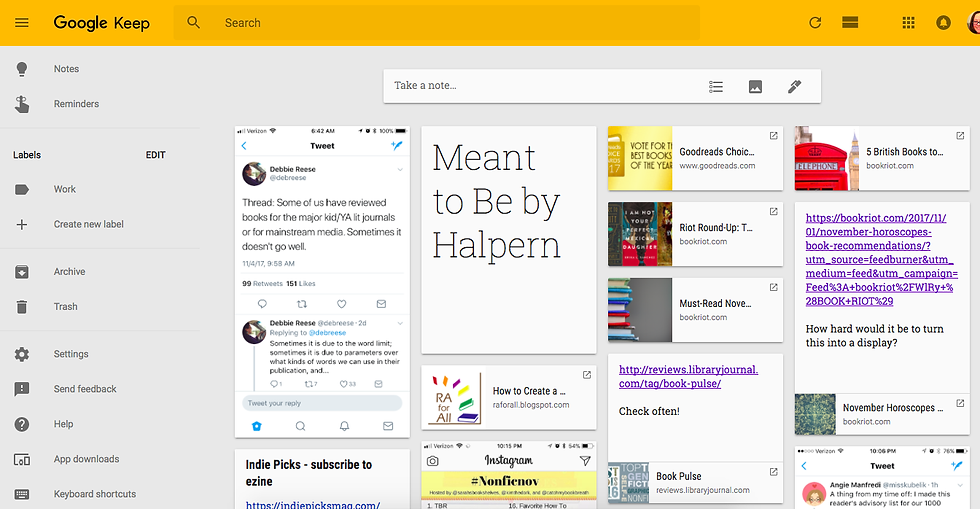
Overview
You can use Google Keep to quickly save ideas and lists. The app looks simple and is easy to use. You do not need to set up anything before you start. If you know Gmail or other Google apps, Google Keep will feel familiar. You can make text notes, checklists, and voice memos. The app can listen to your voice and turn it into words. This means you do not have to type every note. You can add pictures to your notes and set reminders that work with Google Calendar.
Google Keep works well with other Google tools. You can change your notes into Google Docs in just a few steps. This helps you turn a small idea into a big project fast. The app keeps your notes the same on all your devices. You can see your notes on your phone, tablet, or computer. Google Keep can also pull words from pictures using special technology. This saves you time when you need to copy text from an image.
Google Keep is easy to start using right away. You do not need to learn anything new or spend time setting it up.
Pros & Cons
Pros:
The app looks clean and is not confusing
You can record your voice and get text
It works well with Google Docs and other Google apps
Cons:
You cannot change how the app looks much
It does not have as many features as some other apps
Working with others is basic
Feature | Benefit to You |
Voice Notes | Save ideas without typing |
Google Docs Integration | Make notes into documents easily |
Universal Access | Use notes on any device |
OCR | Get text from images |
Pricing
Google Keep is free if you have a Google account. You do not pay for extra features or storage unless your Google Drive is full. You get all the main tools for free. This makes Google Keep a smart pick if you want a simple and cheap note-taking app.
If you already use Google apps, Google Keep fits into your day and helps you stay on track.
10.Simplenote
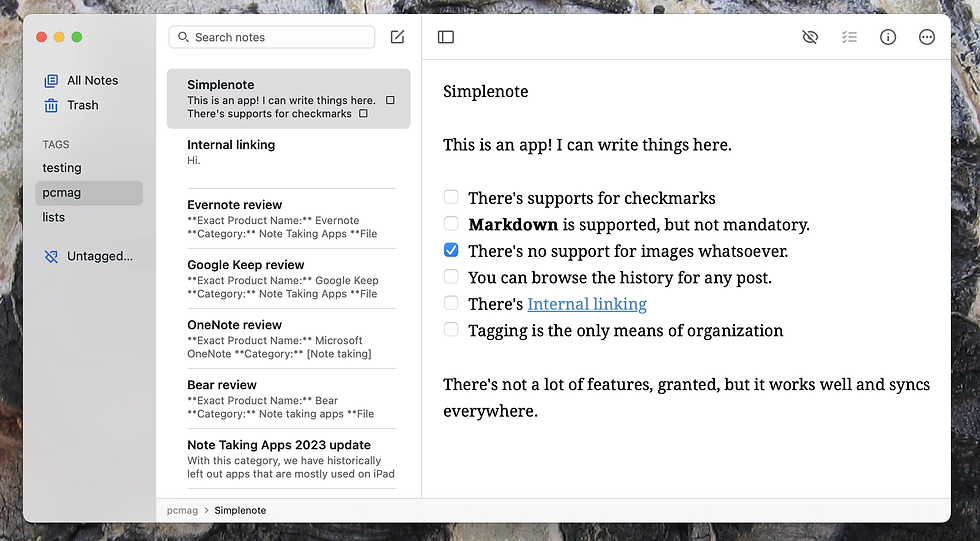
Overview
Simplenote is easy to use and looks very simple. You can make text notes fast and trust them to save right away. Your notes sync on all your devices, like phones and computers. Simplenote works on Windows, Mac, Linux, iOS, Android, and the web. You do not have to learn hard tools. The app is made for speed and is easy for anyone.
Here is a table that shows how Simplenote is different from other free note-taking apps:
Feature | Simplenote | Other Free Note Apps |
Formatting | Plain text only | Rich text, Markdown, images |
Organization | Simple tags, instant search | Folders, nested notebooks |
Security | No end-to-end encryption | Some offer encryption |
Version History | Yes | Sometimes |
Price | Completely free | Free and paid tiers |
Platform Support | All major platforms | Varies |
You can use tags to sort your notes. You can find any note fast with search. If you make a mistake, you can go back to an old version. Simplenote does not let you add pictures or tables. You cannot use folders or plugins. The app keeps things basic so you can just write.
Pros & Cons
Simplenote is quick and helps you focus on your notes. You can use it for ideas, lists, or reminders. The app works well even on old devices.
Pros:
Syncs notes right away on all your devices
Runs fast and does not slow down your device
Easy to sort notes with tags and search
Lets you see and fix old versions of notes
Cons:
You cannot add pictures, tables, or rich text
No password or lock for the app
Not many ways to organize big projects
Pricing
You do not pay anything to use Simplenote. The app is always free. There are no paid features or hidden charges. You get everything as soon as you sign up. Simplenote’s parent company pays for it, so you do not have to worry about money. If you want a simple app for text notes, Simplenote gives you all you need for free.
Best Apple Notes Alternatives Comparison
When you want a new notes app, you should compare them. This helps you pick the best one for you. Each app has something special. Some apps use AI to help you. Others care more about privacy or work on many devices.
Here is a table that shows how the top 10 apple notes alternatives compare on AI features, privacy, and platform support:
App Name | AI Integration Features | Privacy Focus | Cross-Platform Support |
remio | Advanced AI Copilot, AI search, web capture | Personalized, user-data based,stored locally | macOS, iOS |
Microsoft OneNote | AI-generated summaries, Copilot integration | Standard privacy, cloud-based | Windows, macOS, iOS, Android, Web |
notion | Smart search, AI summaries, automated organization | Standard privacy, cloud-based | Windows, macOS, iOS, Android, Web |
obsidian | AI via plugins, knowledge management | Local storage, strong privacy | Windows, macOS, iOS, Android (via sync) |
bear | Basic AI, offline access | Local storage with encryption | macOS, iOS only |
joplin | Plugin-based AI, markdown support | End-to-end encryption, open-source | Windows, macOS, iOS, Android, Linux |
upnote | AI-powered search, clean writing | Local storage, optional sync | Windows, macOS, iOS, Android |
evernote | AI meeting summaries, collaboration | Standard privacy, cloud-based | Windows, macOS, iOS, Android, Web |
google keep | Basic AI, voice notes, OCR | Standard privacy, cloud-based | Windows, macOS, iOS, Android, Web |
simplenote | No AI, fast syncing | Standard privacy, cloud-based | Windows, macOS, iOS, Android, Linux, Web |
Notion and evernote have strong AI tools. Remio also has smart AI features. Obsidian and bear keep your notes private and offline. If you want to use notes everywhere, try notion, evernote, or Microsoft OneNote.
Price is important when you choose an app. Here is a table that shows how much each app costs:
App Name | Free Plan | Entry Paid Plan | Higher Tier Plan(s) | Notes on Pricing Structure |
remio | Yes | Premium AI features | Flexible plans, AI included in paid plan | |
Microsoft OneNote | Free with MS 365 | $6.99/month standalone | - | Free with Microsoft 365 subscription |
notion | Yes | $10/month per user (Plus) | $18/month (Business), AI add-on $10/month | Tiered pricing, AI as add-on |
obsidian | Yes (personal) | $50/year (commercial use) | - | Free for personal use, commercial license fee |
bear | Yes | $2.99/year (Pro) | - | Low-cost Pro plan annually |
joplin | Yes | $1.99/month (Cloud) | - | Free core, paid cloud sync |
evernote | Yes | $14.99/month (Personal) | $17.99/month (Professional) | Multiple tiers, free plan available |
upnote | Yes | $1.99/month | Lifetime license ~$40 | Low-cost, lifetime option |
google keep | Yes | N/A | N/A | Free with Google account |
simplenote | Yes | N/A | N/A | Free forever |
Tip: If you want smart AI, notion and evernote are good, but you might pay more. For privacy, obsidian and bear let you keep notes offline. If you want a free app, simplenote and google keep are great picks.
This comparison helps you find the right app for you. Notion and evernote are good for AI and work on many devices. Remio has a smart assistant and strong AI. Obsidian and bear are best for privacy. When you compare apps, look at features, privacy, and price. This way, you can choose the best note app for your needs.
Choosing the Best Note-Taking App
Identify Needs
First, think about how you will use your note-taking app. If you want to keep personal notes, pick an app that is simple and fast. Apps like evernote and Google Keep help you write ideas quickly. For work, you might need more features. Notion and other note taking apps help with team projects and have AI tools. Many people want a note-taking app that fits their daily routine. Pick an app that matches how you work. Using your app every day is more important than having every feature.
Tip: If you use an ipad note-taking app for school, choose one that lets you save notes fast and organize them easily. For work, pick an app that helps you work with others and manage projects.
Compare Features
Look at what each note-taking app can do before you choose. Some apps have strong AI tools for searching and organizing notes. Notion is good for working with teams and tracking projects. Evernote lets you search fast and save things from the web. Many top note taking apps let you sync notes on all your devices. If you use a tablet, find an ipad note-taking app that lets you write or draw by hand. Make a list of the features you need most, like offline use, templates, or advanced search.
Feature | Personal Use | Professional Use |
Quick Capture | Yes | Sometimes |
Collaboration | Rarely | Often |
AI Summarization | Sometimes | Often |
Cross-Platform Sync | Yes | Yes |
Automation | Rarely | Often |
Privacy & Security
Privacy is very important when picking a note-taking app. Some apps keep your notes on your device, while others use the cloud. Obsidian and Joplin give you more control with local storage and encryption. Notion and evernote use cloud sync, so check their privacy settings. Look for things like end-to-end encryption, passwords, and two-factor login. Some note taking apps have special options for sensitive data. Always check how your app protects your notes and search history.
Local storage apps: More privacy, less chance of leaks.
Cloud-based apps: Easier syncing, but make sure they use strong encryption.
Extra security: Passwords, two-factor login, and encrypted search.
Budget
Think about how much you want to spend before picking a note-taking app. Many top note taking apps have free plans with basic tools. Notion, evernote, and UpNote have paid plans for more storage or extra features. Some ipad note-taking apps cost a one-time fee, while others need a subscription. Compare what you get for the price. Free note taking apps like Simplenote are good for simple needs. Paid apps often have better search, privacy, and AI tools.
Remember: The best note taking app is the one you use every day, not always the one with the most features.
You can pick from many note-taking apps besides Apple Notes. Each app has something special that makes it different. Remio uses smart AI to help you take notes. Microsoft OneNote works on many devices, so you can use it anywhere. Notion is good for planning and managing projects. Obsidian lets you keep your notes private and use them offline. Bear is a stylish app for people who use Apple devices. Joplin is made for people who want their notes to be safe. UpNote is easy to use and does not cost much. Evernote is strong for taking notes and syncing them. Google Keep is quick if you need to write something fast. Simplenote is simple and good for basic notes.
When you stop using Apple Notes, you might have some problems. The table below shows some common problems you could face:
Challenge Category | Description | Impact on Transition to New App |
Syncing Delays and Failures | Sometimes notes do not update on all devices, even with good internet. | This can make you upset and cause your notes to be different on each device. |
Data Loss | If syncing does not work, you might lose changes or notes. | You might worry about losing important notes and not trust the new app. |
Duplicate Notes | You may get many copies of the same note, especially with Google accounts. | This fills up your storage and makes it hard to find the right note. |
Limitations of Alternatives | Google Keep only lets you make small notes, and some apps cost money or need you to trust them. | It can be hard to find an app that is as easy and useful as Apple Notes. |
Trust and Reliability Concerns | Some apps are not always safe or do not work well on all devices. | You might not want to switch if you think your notes are not safe or the app is not stable. |
Try out different note-taking apps to see which one you like best. Notion is helpful for keeping your ideas and projects in order. If you want to change apps, move your notes and check if syncing works first. You will find the best app by trying features and seeing what helps you most. Notion, Remio, and other apps can make taking notes every day easier.
FAQ
What is the best Apple Notes alternative for privacy?
You should try remio or Obsidian. Both apps let you store notes locally and use encryption. You control your data and keep your notes safe from others.
Can I move my notes from Apple Notes to another app?
Yes, you can export your notes from Apple Notes. Most apps let you import files like .txt or .md. Check the help section of your new app for step-by-step guides.
Which note-taking app works best on all devices?
Microsoft OneNote, Notion work on Windows, macOS, iOS, Android, and the web. You can access your notes anywhere and keep everything in sync.
Do these apps support handwriting or drawing?
Bear and Microsoft OneNote support handwriting and drawing, especially on iPad. You can use Apple Pencil or a stylus to write or sketch in your notes.
Tip: Try different apps to see which one fits your style and device best.

